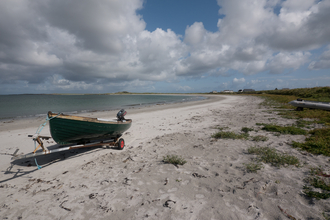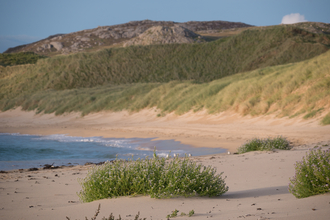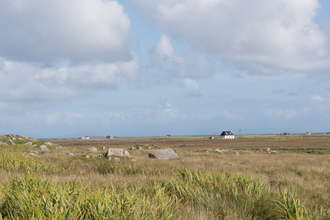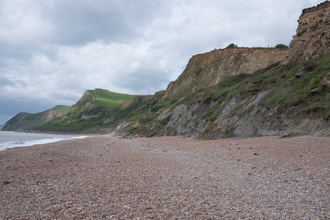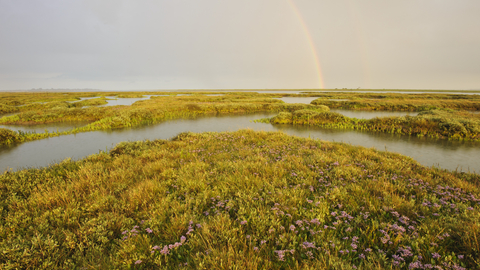
Terry Whittaker/2020VISION
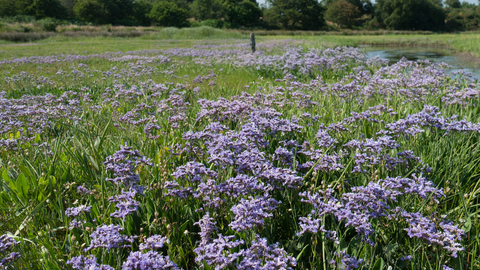
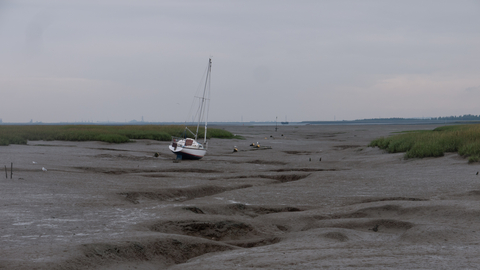
Saltmarsh and mudflats
What is it?
In coastal areas sheltered from waves, slow-moving tides gently lap over a flat expanse of fine mud. Covered at high tide and exposed during low tide, mudflats support a wealth of life; bristle worms, bivalves and mud snails - all food for flocks of wading birds.
Towards land, in the absence of manmade structures, mudflats become saltmarshes - first vegetated with succulent samphire and then with cord-grasses, sea purslane, sea aster and sea lavender as the mud becomes drier. Creeks fan out through the saltmarsh, channelling the water up to flood the lower marsh at high tide and draining away rapidly as the tide drops.
Why is it like this?
Mudflats form within the shelter of estuaries or natural harbours, where fine silt and clay sediments settle. The mud is very fertile thanks to its high content of organic material, making mudflats ideal for hosts of filter-feeding and scavenging invertebrates.
When the accumulating mud rises above the water surface saltmarsh plants can colonise. These capture more sediment and allow the marsh to keep building for as long as it is still low enough to be flooded by the higher tides.
Distribution in the UK
Found in sheltered estuaries and natural harbours around the UK.
What to look for
Visit southern saltmarshes in late July and August to see lilac-tinged expanses of flowering sea lavender – look out also for the pretty, soft leaves and delicate pink flowers of the scarce marsh-mallow at the very top of the saltmarsh. On the grassier, grazed saltmarshes of north-west England and Galloway, huge flocks of wintering wildfowl can be spectacular - visit the east coasts in late autumn and winter to see tens of thousands of wintering waders pushed by the rising tide onto the saltmarshes to roost.
A natural solution to the climate crisis
In saltmarshes carbon is captured by plants growing in the saltmarsh through photosynthesis and is stored both in the plant and the sediment beneath, which can extend several metres deep. A hectare of saltmarsh can capture two tonnes of carbon a year and lock it into sediments for centuries. If the saltmarsh remains undisturbed the carbon in the soil can be stored for millennia!
We know from experience that restoring nature can help soak up carbon emissions - known as natural solutions to climate change - whilst contributing many additional benefits. When healthy, our natural habitats can reduce the risk of flooding, help prevent coastal erosion, improve people’s health and wellbeing and much more.
Conservation
Saltmarshes have been historically threatened, having been ‘reclaimed’ from the sea for use as farmland during as early as Roman times, but modern developments threaten to squeeze them out of existence. Trapped between increasingly frequent storms and rising seas, and hard sea defences that prevent them from moving inland, saltmarshes are being eroded in many places.
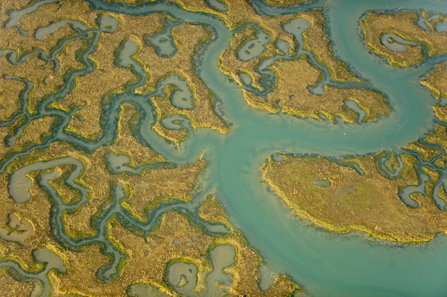
©Terry Whittaker/2020VISION
As well as being a vital habitat for thousands of waders and waterfowl, the role that saltmarshes play in defending our coasts from erosion by waves is increasingly recognised, and efforts are being made to protect and restore them. Although saltmarshes tend to need little conservation management, many have a long tradition of low-intensity grazing, which is important in maintaining their diversity. Re-alignment of sea-defences can allow for expansion of this habitat. One example of this is Essex Wildlife Trust’s Abbotts Hall farm on the Blackwater Estuary.

